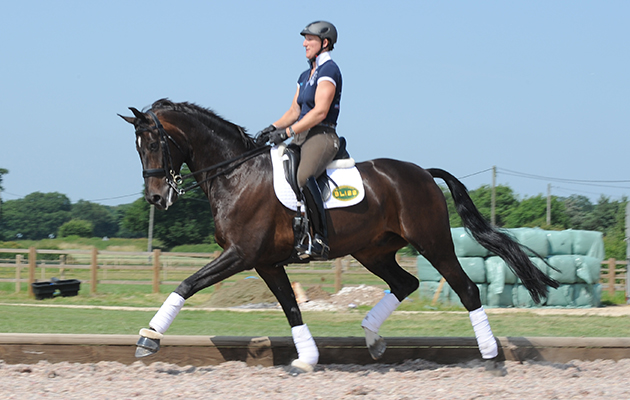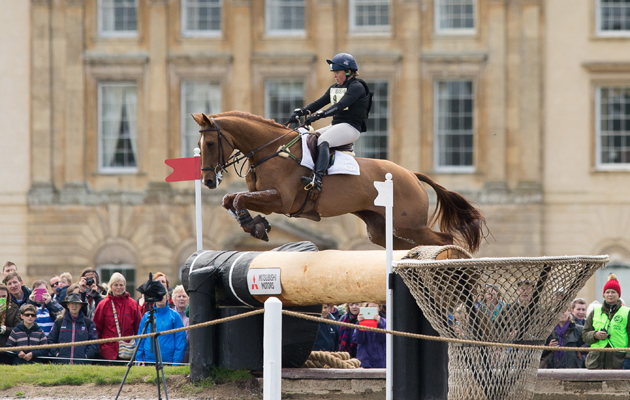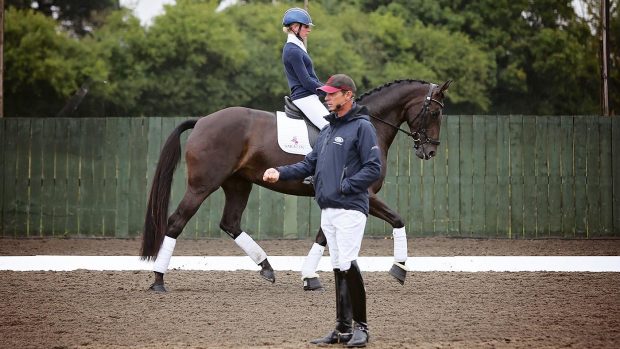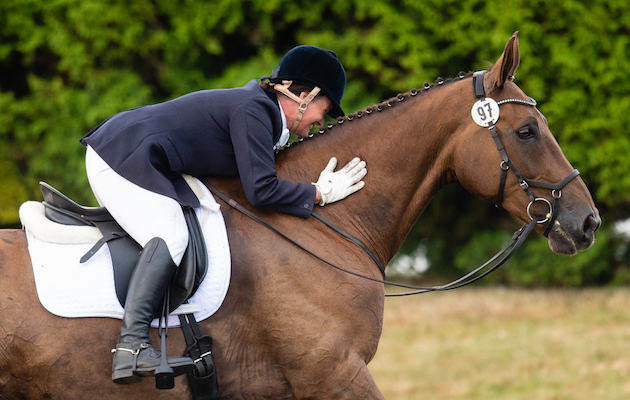The young dressage rider shows us how to execute a half pass, and highlights the pitfalls to avoid
The rider
Having worked for Carl Hester for three-and-a-half years, 25-year-old dressage rider Amy Woodhead has now moved back to her family base near Grimsby.
The horse
Amy is riding Branduardi, an 11-year-old stallion, by Breitling. “He is my top horse at the moment, and he’s currently working at small tour level,” she says. “He’s touching on all of the grand prix movements, so hopefully he’ll be on his way to grand prix for next year.”
How do you ride a correct half pass?
“I would say the first thing you have to do is make sure that you have a good quality canter, that feels in front of your leg and you feel able to adjust it. Because obviously when you’re doing a half pass you’re asking your horse to bend and also to travel,” say Amy.
“After the quality of the canter, I’d say the second most important thing is the preparation to the half pass. So on the turn, you need to feel like your horse is sitting and waiting, ready to execute the half pass across the school.
“You should feel that the horse is truly bending around your inside leg, and travelling off your outside leg. And the minute you finish the half pass, you have to be able to come out into a nice, good quality canter [ready for the next movement],” Amy adds.
What are the common mistakes that people make in half pass?
“[Areas where people go wrong are] the preparation, the quality of the canter and not having enough bend so you could mistake it for a bit of a leg yield because the horse’s body would be too straight. Also a half pass should always be an uphill movement, but a lot of people allow the canter to get a little bit downhill,” Amy warns.






















